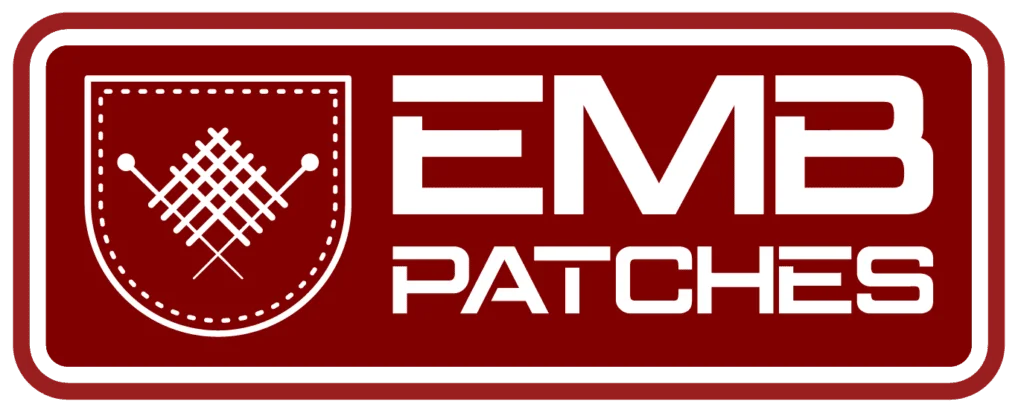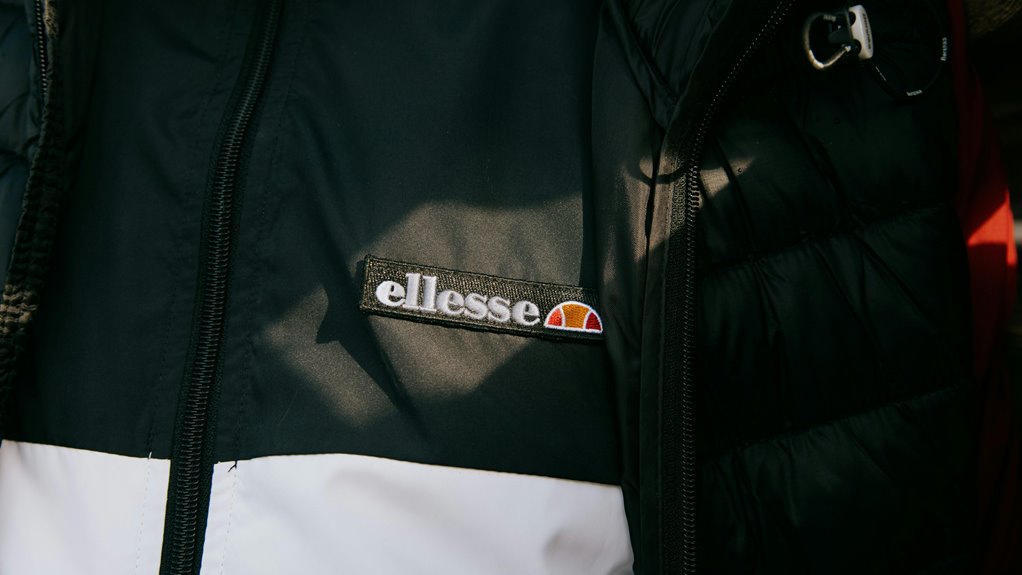When converting logos into embroidered patches, several technical limitations must be considered. Simplify complex designs by removing fine details under 1-2mm and enlarging text to at least 5mm high. Choose sans-serif fonts with increased spacing for better clarity. Select appropriate backing materials (heat-sealed, iron-on, or Velcro) based on application needs. Consider border styles for durability and aesthetics, while balancing raised versus flat embroidery techniques. Proper planning prevents production complications and guarantees quality results on various garments.
Things to Consider for Designing Custom Logo Into Embroidered Patch
When transforming a custom logo into an embroidered patch, businesses must carefully evaluate several critical design considerations that affect the final product’s quality and appearance.
The complexity of the original logo often requires simplification, as intricate details may be lost during the embroidery process. Design inspiration should come from clean, bold elements that translate well to thread-based mediums.
Color selection presents another challenge, as embroidery threads offer limited palettes compared to digital designs. Businesses seeking accurate brand representation must work with experienced patch manufacturers to select appropriate thread colors that maintain brand integrity.
The patch size also greatly impacts detail retention—larger patches accommodate more intricate designs, while smaller ones require greater simplification.
Font choices for text elements deserve special attention, as thin or decorative typefaces often become illegible when embroidered.
Simplifying Complex Details for Thread Translation
When translating logos into embroidered patches, designers must account for the physical limitations of thread thickness, which typically cannot reproduce details smaller than 1-2mm.
Fine lines, intricate textures, and small text often need simplification to guarantee they remain legible and visually effective after embroidery.
Designers should convert gradients to solid color blocks, increase the size of tiny elements, and maintain adequate spacing between design components to prevent thread crowding during the production process.
Thread Thickness Limitations
A fundamental challenge in patch embroidery lies in the physical limitations of thread thickness, which directly impacts how much detail can be reproduced in a design. When creating custom logo patches, manufacturers must work within constraints that standard digital designs don’t face.
Modern embroidery techniques require appropriate spacing between elements, as thread simply cannot be manipulated below certain dimensions.
- Thread cannot render details smaller than 1mm effectively, causing fine lines to disappear or blend.
- Text smaller than 5mm in height often becomes illegible once embroidered.
- Thread compatibility issues arise when altering between different thickness threads.
- Sharp corners and acute angles may appear rounded due to thread’s physical properties.
Designers must account for these limitations early in the creative process to avoid disappointing results when digital artwork evolves into tactile embroidery.
Minimum Detail Size
Successful embroidered patch design hinges on understanding minimum detail size requirements for proper thread translation. Intricate elements smaller than 2mm often become blurred during the embroidery process, resulting in compromised logo clarity. Fine text, especially below 6-point font, typically loses definition when converted to stitches.
When designing custom patches, customers should simplify complex logos by eliminating unnecessary details. Small icons, thin lines, and minute text elements require careful consideration, as these features may need enlargement or removal.
Designers must evaluate the relationship between patch size and detail complexity, understanding that smaller patches require more significant simplification. Professional embroiderers recommend converting detailed areas into solid blocks of color when possible, maintaining recognizable brand elements while ensuring the final product remains sharp and professional across various applications.
Optimal Size Parameters for Embroidered Patches
Determining the appropriate size for logo embroidered patches represents one of the most critical decisions in the design process. Patch dimensions must balance detail preservation with practical wearability, while patch shape evaluations greatly impact both production capability and visibility distance.
Designers typically recommend sizes between 2.5 and 4 inches for standard applications, though specific needs may vary.
Common size parameters to evaluate include:
- Placement location (hat, jacket, bag) influencing maximum dimensions
- Design complexity requiring minimum size for detail clarity
- Production minimums from manufacturers (typically 1.5 inches)
- Intended viewing distance determining necessary scale
Selecting inappropriate dimensions may result in illegible designs, difficult application, or increased production costs.
Most manufacturers provide size templates to assist customers in visualizing the final product before production begins.
Thread Color Selection and Limitations
When designing custom logo embroidered patches, thread color selection dramatically impacts both visual appeal and practical functionality. Designers must consider available thread options, as not all colors may be accessible for every project.
Color contrast plays a significant role in readability, particularly when displaying text or intricate logo elements. Patches with insufficient contrast often appear muddled and fail to convey the intended message effectively.
Thread availability varies across manufacturers, with standard palettes typically offering 200-300 colors. Special threads, including metallic, neon, or glow-in-the-dark options, may require minimum orders or incur additional costs.
Designers should request physical thread charts rather than relying solely on digital representations, as screen colors rarely match actual thread appearance. When selecting colors, consider how different lighting conditions might affect visibility and whether the patch will appear on various background materials.
Texture and Dimension in Embroidered Designs
Texture and dimension in embroidered patches depend greatly on the stitch types selected, with satin stitches creating smooth surfaces while fill stitches provide texture and depth.
The thread count directly influences the level of detail possible, as higher counts allow for more intricate designs but may increase both production complexity and cost.
Designers must carefully consider whether to incorporate raised elements through techniques like 3D puff embroidery or maintain a flat design, as this choice affects not only the patch’s visual impact but also its durability and application versatility.
Stitch Types Matter
Though often overlooked by novice designers, stitch types serve as the fundamental building blocks of any embroidered patch, dramatically influencing both texture and dimension in the final product.
Different stitch patterns create varying effects that can enhance logos or diminish their impact. Proper stitch density guarantees durability while preventing bunching or gaps that compromise quality.
- Satin stitches provide smooth, glossy surfaces ideal for lettering and borders
- Fill stitches create solid coverage for larger areas with consistent texture
- Running stitches work best for thin lines and delicate details
- Specialty stitches like cross-stitch or chain stitch add unique textural elements
Selecting appropriate stitch types requires understanding both the technical limitations of embroidery machinery and the visual requirements of the design.
Without this knowledge, even beautifully conceived logos may translate poorly to the physical medium.
Thread Count Effects
Thread count represents the next critical factor in embroidered patch design, building on the foundation established by stitch type selection. Higher thread counts create more detailed, dimensional designs but require sophisticated embroidery techniques to execute properly.
When thread density increases, the texture becomes more pronounced, giving logos a professional, tactile quality that stands out. Designers must balance aesthetic desires with thread durability concerns.
Excessive thread counts in limited spaces can lead to thread breakage, needle damage, and diminished longevity of the finished patch. Most commercial embroidery machines have ideal thread density ranges that, when respected, produce the best results.
Understanding these limitations helps avoid production complications while ensuring the final patch maintains its appearance through regular wear and cleaning processes.
Raised vs. Flat
When considering embroidered patch designs, the choice between raised and flat techniques dramatically affects both visual impact and practical functionality. Raised edges create a dimensional effect that makes logos stand out, while flat designs offer a more subtle, professional appearance suitable for formal applications.
The decision between these styles should account for several factors:
- Durability – raised elements can experience more wear in high-friction areas
- Cost – raised embroidery typically requires more thread and production time
- Visibility – raised designs are more noticeable in low-light conditions
- Flexibility – flat designs conform better to curved surfaces like hats
Each technique serves different purposes. Organizations requiring patches for uniforms often select flat designs for comfort, while commemorative or decorative patches benefit from raised elements that emphasize important details and create visual depth.
Backing Material Options and Their Impact
The selection of backing materials for embroidered patches greatly impacts both their functionality and wearability. Common backing types include heat-sealed, iron-on, adhesive, and Velcro options, each serving different attachment purposes.
Heat-sealed backings provide permanent application to garments, while iron-on varieties offer convenient home application without specialized equipment.
Durability considerations should factor prominently when selecting backing materials. Patches intended for workwear or outdoor gear require stronger backings than those destined for occasional-use items.
Velcro-backed patches allow for repositioning but may collect debris over time. Adhesive backings, though convenient, typically offer less longevity than heat-sealed alternatives, especially when subjected to repeated washing.
For items that experience regular friction, such as backpacks or work uniforms, reinforced backings with plastic coating provide superior resilience.
Border Styles and Edge Finishing Techniques
Borders and edge finishes serve as essential elements in custom logo embroidered patches, providing both aesthetic appeal and structural integrity. The border style frames the design while preventing fraying and unraveling at the edges, extending the patch’s lifespan considerably.
Several common border and edge finishing options include:
- Merrowed borders – Raised, rope-like edges that create a defined boundary and professional appearance
- Hot-cut borders – Heat-sealed edges that prevent fraying without adding thickness
- Laser-cut borders – Precisely cut edges with minimal bulk, ideal for intricate designs
- Tackle twill finishing – Layered fabric borders that add dimension and durability
When selecting border styles and edge finishing techniques, designers must consider both the patch’s intended application and the complexity of the logo design to guarantee best results.
Typography Adjustments for Embroidery Clarity
Unlike digital designs, typography in embroidered patches requires specific adjustments to maintain legibility and visual clarity. Text must be sized appropriately, as letters under 5mm tall often become illegible when embroidered.
Font legibility is paramount—sans-serif fonts like Arial or Futura typically embroider more cleanly than decorative styles with thin elements that may disappear in thread translation.
Character spacing needs careful consideration, with slightly increased tracking to prevent thread buildup between letters. Designers should avoid extremely thin strokes and intricate details that embroidery machines cannot accurately reproduce.
Converting text to outlines before submission helps prevent font substitution issues. For smaller patches, reducing text content and increasing font size generally produces better results than maintaining extensive text at minuscule sizes that becomes unreadable once stitched.
Patch Placement and Application Methods
Successful integration of custom embroidered patches depends greatly on selecting appropriate placement locations and application methods. The patch orientation must align with the contours of the garment or item, ensuring visibility while maintaining aesthetic appeal.
Different application surfaces require specific attachment techniques to guarantee durability and proper presentation.
- Heat-sealed application works best on synthetic fabrics but may fail on heat-sensitive materials.
- Velcro backing provides versatility for tactical gear and items requiring removable patches.
- Sew-on methods offer the strongest attachment but require additional time and skill.
- Adhesive backings provide temporary solutions suitable for lightweight fabrics.
When determining placement, consider standard locations like left chest, shoulder, or sleeve areas where patches traditionally appear. Each location affects visibility and may influence the required size of your embroidered design.
Conclusion
Transforming logos into embroidered patches requires careful consideration of practical limitations and artistic vision. While intricate digital designs may captivate on screen, the physical constraints of thread and fabric demand thoughtful simplification. Successful patches balance visual impact with technical feasibility—where thread count meets brand identity. By addressing these critical factors early in the design process, creators avoid costly revisions and produce patches that remain clear, durable, and faithful to the original concept.

